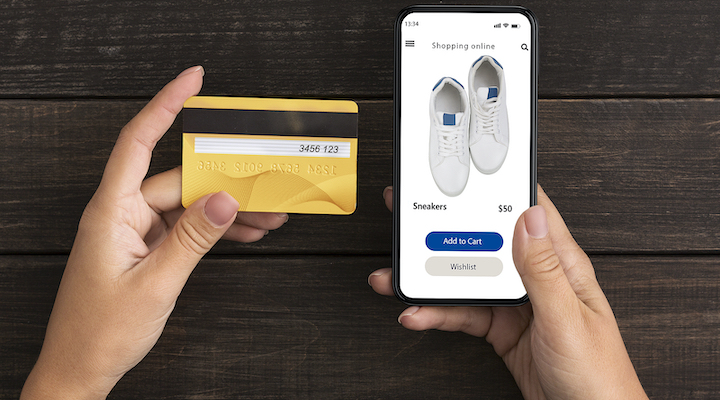The e-commerce industry is growing at a rapid rate, and it’s impacting brands and retailers in numerous ways.
On the one hand, the accelerated state of e-commerce means there are countless opportunities for the prepared seller. At the same time, it can be incredibly challenging to keep up with trends that change almost daily.
Now more than ever, it’s critical to understand the latest consumer expectations — and be ready to adapt. Looking ahead to the future of online shopping, three key trends in particular are likely to have lasting implications.
Direct-to-consumer selling
Around the world, direct-to-consumer (D2C) brands are becoming mainstream — and they’re causing a major shift in where, when and how shopping is done. From the increased market share of digitally native brands to decisions from companies like GlobeWest and Homebodii to dial up D2C strategies, shoppers are becoming increasingly accustomed to purchasing products directly from brands. And if the latest consumer behaviours are any indication, this trend is here to stay.
According to the latest data from Australia Post, more than four in five households shopped online in early 2021 – an all-time high that’s been rising steadily since the global pandemic first sent people to online channels in record numbers. Australians spent an unprecedented $50.46 billion online in 2020, and many sellers experienced substantial growth in key categories, such as home goods, health and beauty.
As Australians get used to meeting their shopping needs online, they’re discovering just how convenient it can be to buy items in a few clicks from their favourite D2C brands. Looking ahead, there are likely to be many more advancements on the direct-to-consumer front. In the US, for example, eMarketer reports that D2C sales now account for 33% of Nike’s revenue.
With marketplaces growing more than 80% globally in 2020, there will be even more options than ever for brands to connect with consumers.
Fulfilment of the future
Expectations around delivery are changing as well.
According to one recent survey from ShipStation, 66% of consumers prefer contactless returns. Additional data from the Australia Post shows adoption of alternative delivery options, such as parcel lockers and Click and Collect, increased 30% in 2020.
These and other trends are pushing many retailers to innovate on the fulfilment front. Some are leveraging physical stores to fulfil more e-commerce orders, while others are using the dark store model to turn low-traffic locations into high-volume fulfilment hubs. New and innovative methods for fast, free deliveries will continue to reshape Australia’s fulfilment landscape in the months and years ahead.
Shifting demographics
As ease and convenience continue to influence online shopping trends, brands and retailers should evaluate not only how purchases are made but who is making them.
While National Australia Bank data showed less than one in 10 e-commerce transactions came from consumers aged 65 and older a few years ago, recent events have influenced this demographic to shop online far more frequently. More than a quarter of Australian baby boomers surveyed by Salesforce Research say they’re likely to continue purchasing staples online. And those numbers increase significantly with subsequent generations: An estimated 79% of Millennials and Gen Z consumers plan to regularly shop online for the foreseeable future.
As these and other recent trends continue to shape the future of online retail, it’s imperative for brands and retailers to have the right processes in place.
To compete on the fulfilment front, for example, many are turning to automation to meet consumer expectations, save time and protect profit margins. For instance, they might use “smart” order routing to have each order sent to the most cost-effective carrier, or partner with a third-party logistics provider to handle the complexities of fast, free shipping.
When it comes to advertising, finding the right mix of paid search, social and marketplace advertising can go a long way in helping brands and retailers gain a competitive advantage.
And in every area, from marketing to selling to fulfilling, benchmarking will be key. Which categories are growing the fastest? Are products performing as well as they could be? Where are the newest opportunities for growth? Answering these and other key questions can help ensure brands and retailers stay at the forefront of a constantly shifting e-commerce environment.
Bottom line: If there’s one thing that’s certain, it’s that e-commerce will continue to account for more and more of the retail market. And now’s the time to get ahead.
ChannelAdvisor (NYSE: ECOM) is a leading e-commerce cloud platform whose mission is to connect and optimise the world’s commerce. For two decades, ChannelAdvisor has helped brands and retailers worldwide improve their online performance by expanding sales channels, connecting with consumers, optimising their operations for peak performance, and providing actionable analytics to improve competitiveness. Thousands of customers depend on ChannelAdvisor to securely power their sales and optimise fulfilment on channels such as Amazon, eBay, Catch, Google, Facebook, Walmart, and hundreds more. For more information visit channeladvisor.com/au.

